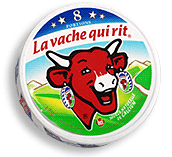
(1) The Eternal spoke to Moses and Aaron, saying: (2) This is the ritual law that the Eternal has commanded: Instruct the Israelite people to bring you a red cow without blemish, in which there is no defect and on which no yoke has been laid.
They said, "Call upon your Lord to show us what is her colour." He said, "He says, 'It is a yellow cow, bright in colour - pleasing to the observers.' "
(1) Who is this coming from Edom, In crimsoned garments from Bozrah— Who is this, majestic in attire, Pressing forward in great might? “It is I, who contend victoriously, Powerful to give triumph.” (2) Why is your clothing so red, Your garments like his who treads grapes? (3) “I trod out a vintage alone; Of the peoples no man was with Me. I trod them down in My anger, Trampled them in My rage; Their life-blood bespattered My garments, And all My clothing was stained.
(18) “Come, let us reach an understanding, —says the Eternal. Be your sins like crimson, They can turn snow-white; Be they red as dyed wool, They can become like fleece.”
(9) How is your beloved better than another, O fairest of women? How is your beloved better than another That you adjure us so? (10) My beloved is bright and red, Preeminent among ten thousand. (11) His head is finest gold, His locks are curled And black as a raven.
(8) In the night, I had a vision. I saw a man, mounted on a red horse, standing among the myrtles in the deep, and behind him were red, speckled, and white horses.
(7) the Eternal God formed the human from the dust of the earth. God blew into his nostrils the breath of life, and the human became a living being.
וַיֹּ֧אמֶר יְהֹוָ֛ה ק֥וּם מְשָׁחֵ֖הוּ כִּי־זֶ֥ה הֽוּא׃
(11) Then Samuel asked Jesse, “Are these all the boys you have?” He replied, “There is still the youngest; he is tending the flock.” And Samuel said to Jesse, “Send someone to bring him, for we will not sit down to eat until he gets here.” (12) So they sent and brought him. He was reddish, with beautiful eyes, and handsome. And the Eternal said, “Rise and anoint him, for this is the one.”
(2) King David rose to his feet and said, “Hear me, my brothers, my people! I wanted to build a resting-place for the Ark of the Covenant of the Eternal, for the footstool of our God, and I laid aside material for building. (3) But God said to me,‘You will not build a house for My name, for you are a man of battles and have shed blood.’
by Elon Gilad
While the bible has precious little mention of black and quite a bit of white, it has a great many things described as being adom. These cover shades that would not be considered red at all in English, or in modern Hebrew either.
For example, special ritual cows are described as "red," though they are in fact brown (the Koran calls them "yellow"). Another "red" item, a-la bible, is the lentil stew that Jacob gave his brother Esau in return for his blessing – that is also described as adom but was presumably brown. ("Red" or "pink" lentils are a: no such thing and b: cook into a yellowish-brownish paste.)
Adom didn't only cover brown, naturally. It also covered various shades of red such as the hair of the famously redheaded King David, who is said to be an admoni. The Bible also uses the word adom to describe the pinkish flesh of a lover in the Song of Songs and the deep red color of blood.
It is likely that the word adom itself comes from the Hebrew word for blood – dam. That may also be true of the word for earth - adama.
And what if one of the gods does wreck me out on the wine-dark sea? I have a heart that is inured to suffering and I shall steel it to endure that too. For in my day I have had many bitter and painful experiences in war and on the stormy seas. So let this new disaster come. It only makes one more.
by Chelsea Wald
To solve the puzzle, the young scientists needed more data. In the mid-1960s, they were both hired as professors at the University of California, Berkeley, and with their students’ help, they rounded up native speakers of 20 languages, including Arabic, Hungarian, and Swahili. The researchers showed each speaker 329 standard color chips and asked him or her to name each one’s “basic color term”—the simplest, broadest word that described its shade. Drawing from previous anthropological work, they added color lexicons from 78 additional languages around the world.
The results revealed two remarkable patterns, which Kay and Berlin laid out in their 1969 monograph, Basic Color Terms. First, almost all of the languages they examined appeared to have color words that drew from the same 11 basic categories: white, black, red, green, yellow, blue, brown, purple, pink, orange, and gray. Second, cultures seemed to build up their color vocabularies in a predictable way. Languages with only two color categories chunked the spectrum into blacks and whites. Languages with three categories also had a word for red. Green or yellow came next. Then blue. Then brown. And so on.
(ג) דַּבֵּר אֶל בְּנֵי יִשְׂרָאֵל וְיִקְחוּ אֵלֶיךָ פָרָה, הַאי פָּרָה לְדַכְיוּתָא קָא אַתְיָיא. לְדַכְּאָה לְמִסְאֲבֵי. פָּרָה דְּקַבִּילַת מִן שְׂמָאלָא. וּמַאן הוּא לִשְׂמָאלָא. שׁוֹר. כְּמָה דְאַתְּ אָמֵר, (יחזקאל א׳:י׳) וּפְנֵי שׁוֹר מֵהַשְּׂמֹאל. אֲדוּמָה, סוּמָקָא כְּוַורְדָּא. דִּכְתִּיב, (שיר השירים ב׳:ב׳) כְּשׁוֹשַׁנָּה בֵּין הַחוֹחִים. אֲדוּמָּה: גִּזְרַת דִּינָא.
"Speak to the children of Israel, that they bring you a red heifer..." (Num 19:2). This cow is for the purpose of cleansing to purify the unclean, that receives from the left. Who is on that left? It is the ox, as it says, "the face of the ox from the left side" (Ezekiel 1:10). Red means red as a rose, as it is written: "like the rose among thorns" (Song of Songs 2:2). a sentence of law.



